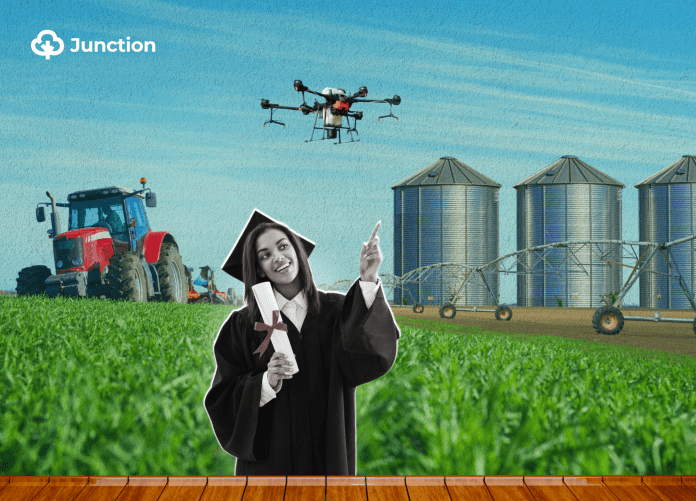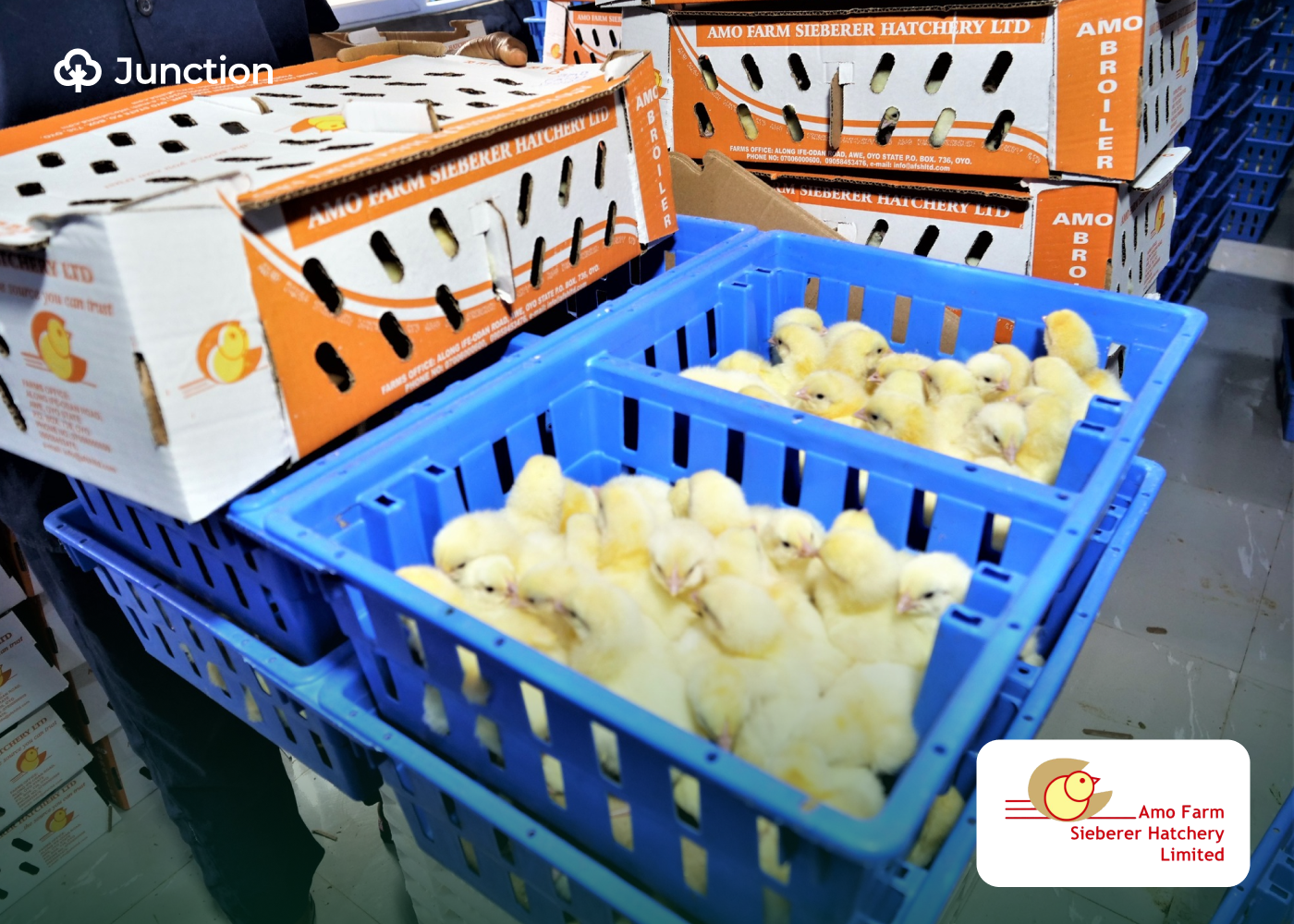Questions answered in this article: - How can young people be convinced to adopt agriculture as a viable economic option? - In quantitative terms, how can encouraging agricultural undergraduates and graduates to join agro-production improve Nigeria's economy and food security?
As of 2019, about 123 thousand young people were studying agriculture as a major in universities across Nigeria. We can explore this cohort as a potentially formidable force to support Nigeria’s much touted agricultural transformation.
From my personal experience, agriculture is not usually the first choice of students aspiring to a tertiary education and degree in Nigeria. Reasons may include that it doesn’t present a clear path to a fulfilling and high-paying career, where options may be limited to a few government jobs such as extension and administration, academia, and farm management in the few commercial farms. These options are neither prestigious nor do they rank amongst the most economically rewarding.
Admittedly, there is no data to support the teaching staff force in agriculture, but let’s assume that the total teaching and civil service jobs in agriculture would be less than 25 thousand across public and private schools in primary, secondary, and tertiary education, and the three tiers of public service. This is about the same as the available annual addition to the labour pool from agricultural majors. Add this saturation to uncompetitive pay and employment terms; then you may have the reason agriculture graduates find career options outside of agriculture.
However, a growing number of agricultural majors take entrepreneurial paths around applying their education, mainly as a second job, secondary economic option, or side hustle. Some also take it as their primary economic option, thereby starting and building ventures in primary production, processing, marketing, and distribution.

First appreciation of agriculture is usually genuine and beneficial
Though I was not particularly enthused to pursue a university degree in agricultural economics and extension, I still had my first experiences and appreciation of agriculture in the university. Because I had to pass, I paid attention and became a convert. Of particular interest was the application of the knowledge and principles I was learning in areas such as feasibility study and business planning where I had to create a bankable business plan for an agricultural venture. Experiences during my farm practice year, where I had to manage a farm; and rural sociology, where I had to manage engagements with people in a rural farmstead were also exciting. The excitement, appreciation, and application began and catalysed a fulfilling career in agriculture.
This is the path and experience of a good number of agricultural majors. They are usually excited by the prospect of practical application of their theoretical knowledge and the economic benefits obtainable from it. Many of them have gone on to create agricultural ventures stemming from their farm year and some from all their years in university.
Opportunity to parlay theory with practice for a productivity base, research sandbox, and medium holder pipeline
When over 120 thousand people develop agriculture at a young and impressionable age, an army that can deliver sustainable food security and economic gains is formed. Right from when they are in school, they can be shaped and purposed for commercial agricultural and economic undertakings outside of school for their individual and national benefit.
Because most undergraduate agriculture degree programmes take about five years of study, it is safe to assume that a fifth of them will complete their studies every year. As they graduate, they can be guided and supported to join a deliberately curated and groomed pool of highly productive commercial farmers that need no introduction to agriculture. They will come with experience and understanding from a safe space of the practical application of theoretical knowledge while in their school, albeit with economic benefits.
This army of producers can form the core of Nigeria’s elite agriculturists. They can be purposed for high-value commercial agriculture and form a support channel to smallholder and commercial farmers in an agriculture extension framework. Since they are educated and experienced before full engagement in commercial agriculture, they will understand the strategic and tactical thrusts of the country’s agriculture and be suited to implement them with complete understanding and appreciation. For example, their productivity can deliver import substitution and exports that have higher quality standards and precision while still supporting smallholders to satisfy local demand.
With the current rate of enrolment in agriculture majors across tertiary institutions in Nigeria, an 80% conversion to applied commercial agriculture births 200 thousand highly trained and adapted agriculturists in ten years. These young people can support up to 2 million smallholders in a structured extension and value enhancement system. Combining these two can deliver as much as 240 million metric tons of produce if grains are used as a benchmark.


How we can make it work
To make this work, creative programs must take and merge elements of student loans, scholarships, internships, and skill pipelining. These programmes will consider the peculiarities of the target student audience like demography and background, the required outcomes, and multidimensional stakeholders such as landowners and schools. They must also include incentives to encourage stakeholder and participant commitment and delivery.
For example, rather than issuing student loans directly towards tuition, it can be issued towards agricultural production. Then, recipients can pay for tuition and living expenses from the production proceeds, while having some left to utilise as pleases the student.
The American sports scholarship model can also be adapted. Sports participation is rewarded with a scholarship as compensation for the scholar’s contribution, usually from revenue accrued to the school from their sporting activities. Here, excellent applied agricultural productivity and superior grades, can be rewarded with scholarships. Schools or their representatives can serve as an out-grower anchor for agricultural production.
For effective implementation, there are roles to be played by stakeholders such as the schools, landowners, and off-takers. Schools have critical roles to play as they must consider agricultural production in their curriculums, student loans, and scholarship models. Where schools have ample arable land, they must be willing to contribute it for agricultural production. Also, they must purpose their faculty to support enhanced curriculum tuned for applied venture of students and work with anchors in out-grower systems for their economic benefits.
Agricultural value chain enhancers such as landowners, banks, insurers, and commodity traders must be incentivised to participate in a programme of this nature, to provide financing, insurance, and trade. An aggregating platform that supports the agricultural value chain, like NIRSAL Plc, should consider galvanising these stakeholder groups by creating guarantees for their investments and credit.
Because educated young people that are digital natives are involved, there is an opportunity to deploy digital technology in scaling both administrative and technical components of this programme. Digital technology can be used for enrolment, knowledge and skills enhancement, banking, enterprise resource planning (ERP), marketplace, and other adjacent values. New technology, such as generative artificial intelligence (AI), can be deployed for first-level technical, extension, and business guidance, with the ability for continuous improvement and scale.
We must make students love this by intentional advocacy that shows a path to success while showing what they need to do and how. Advocacy must be designed to amplify the benefits while not underplaying the commitment required so that potential participants have well-managed expectations and ensure high conversions and completion rates.

Benefits for a nation searching for growth in young people
Starting applied and productive agriculture early and in schools creates benefits and opportunities to improve outcomes for students, institutions, and the overall economy. Most importantly, it creates opportunities for impactful and relatable learning, effective practical knowledge transfer, and revenue for students that can go into their fees and living. A well-crafted and implemented school-based production by students may also improve enrolment, thereby improving and strengthening the pipeline of future agricultural producers, and the policy leaders of tomorrow.
Starting production at tertiary institutions will support agricultural faculties and institutions to improve their mechanisms for teaching and impactful knowledge transfer which will then improve the quality of their graduates. It will improve multifaceted revenue generation by improving enrolment because students see a path to economic participation right from school. Funding their education through loans linked to production could also encourage enrolments. Faculties can be a part of the business end of the system that supports this programme, where they can earn revenue.
Using a 50% conversion and participation rate, about 60 thousand of the 120 thousand university students will be available for this programme. Assuming they all produce maize, each producing at the lower border of medium holder agriculture (5 hectares), about 300 thousand hectares will be cultivated.
Since we can rely on educated students and faculties to use best practices and tools to produce, the higher border of yield possibility of about 6 tons per hectare can be achieved; with irrigation, this can be done two times a year. It creates an opportunity to produce 3.6 million tons of maize. To put in perspective, Nigeria’s strategic grain reserve (silo) capacity was 1.3 million metric tons in 2021.
Because of their possible high productivity and reliability, a third of the available student capacity in the universities can be purposed to effectively fill the available capacity of the strategic grains reserve. A portion can also be purposed for such strategic economic and social outlooks like export and school feeding programme, and interventions to ensure food price stability.
There are immediate and long-term quantitative economic values to such a programme in multiple dimensions.
For example, using today’s farmgate price of maize, which averages around $350 thousand per ton, up to $1.2 trillion farmgate value can be created $60% of MTN Nigeria’s 2022 revenue ($2 trillion).
At about $24 million in revenue per capita (student) and $12 billion per institution, with about 30% net income shareable between institution, students, other direct production stakeholders, or faculty. This system could make Nigeria’s agricultural students some of the most productive in Africa, even before graduating.
As agriculture is usually a five-year programme, it can be assumed that a fifth of the students will graduate annually. At a participation rate of 50%, this translates to 12 thousand competent students graduating to become agricultural entrepreneurs and producers annually. Upon graduation, they will likely operate in the medium holder segment, producing on land of up to 100 hectares or equivalent in non-crop value chains and integrated agriculture systems. This can add 1.2 million hectares to cultivated land annually, about 10 million tons of produce, and another $5.7 trillion farmgate value (more than the 2022 revenue of all Nigeria’s telcos), and expandable to $10 trillion if processed.

Ascribing ten direct jobs and 20 indirect jobs to the number of graduates from this entrepreneurial programme will create 120 thousand direct and 240 indirect good quality jobs. While in school, about 240 thousand additional jobs can be created to support these efforts.
In the long term, student-focused, and school-based applied commercial agriculture products will form the core of an intentional effort to create an elite corps of highly productive medium holder farmers. They will produce optimally and support the flanks of smallholder farmers to improve their productivity and commercial entities to efficiently access agricultural production clusters populated by smallholder farmers.
The proposed students-focused applied and commercial agriculture can be implemented in integrated production and processing hubs. These will be linked in a system of agricultural clusters that supports agricultural development within the framework of a circular agricultural economy. It should consider the sustainable provision of crucial attributes such as commercial and out-grower farming, processing, low complexity input production, research, development, practice knowledge, a beautiful, functional, and sustainable environment. It should also seek to develop, improve, and adapt critical components of practical agriculture, such as irrigation and mechanisation-supported primary production, modular storage and processing, financial inclusion, and skill development fellowship for young people.Â

As an economy looking inward for its food and agricultural raw material supply, it is important to produce professional and committed agriculturists by improving agricultural institutions and students’ outcomes. Showing a path to economic productivity in agriculture both in school and out of school can increase enrolment in agriculture majors. Furthermore, it will encourage more young people to take agriculture as a viable economic option. Ultimately, it will help to increase Nigeria’s local agricultural supply, and share of the African and global agricultural markets.
What is Nigeria’s agricultural dawn?
The current state of Nigeria’s agriculture and the renewed effort to improve it for optimal productivity within the potentials offered by assets like available arable land, favourable climate, labour, aspirational entrepreneurs, educational institutions, and local and export markets present opportunities for two new dawns. The dawns are further amplified, especially as Nigeria’s economy undergoes much-needed enhancements, with agriculture playing key roles in jobs, food security, and foreign exchange earnings.
The first dawn starts with the young of our population, who are at the beginning of their economic engagements. Catching them young, especially as they are still impressionable, is crucial. Nowadays, students already engage in economic activities like software development, content marketing, trading, subsistence farming, and food. As agriculture presents an opportunity to apply its theory taught in schools, students of tertiary institutions can be intentionally purposed and supported to be a part of an agricultural revolution, supported in a national outlook that benefits them, their institutions, and the whole country.
The second dawn is that of a new administration that has pointed at agriculture as a tool for youth engagement and economic rejuvenation. As this administration settles in its dawn to streamline, consolidate, and enhance its campaign promises to policies, it is important to take notice of the opportunities that a combination of agriculture students, faculties, and other sectoral assets like finance and land present. These opportunities can create and continue to pipeline a crop of well-educated, highly trained, and experienced agriculturists to form an elite corps that can anchor their high productivity in agriculture, for vertical and horizontal positive economic and social multipliers.
We must set out at these two dawns.




This is a fascinating read, Glad to have stumbled on this blog, I am also a firm believer that young people like myself can generate a lot of revenue and play a positive role in boosting the nationâs GDP through agricultural practices, thereâs a lot that still needs to be done to encourage/convince young people to venture into agric, and this write up is a start, Kudos sir.
Excellent. It is refreshing that a number of us a thinking and looking in this direction.
What a detailed idea here. Bringing this to practice will eventually encourage more graduating agriculturist to get involve in agriculture as they’d have had a taste of the good it could bring to them from school.